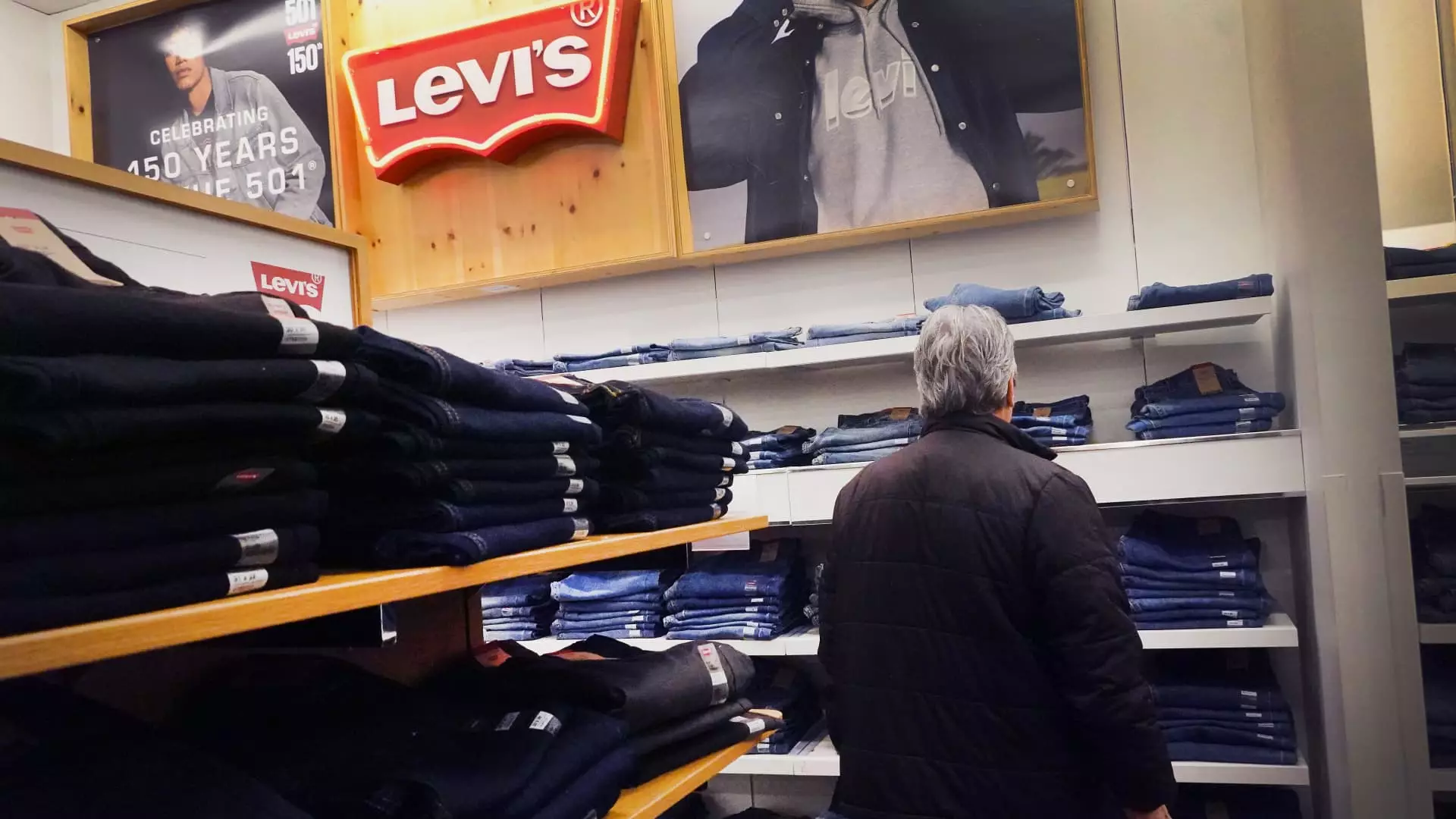Levi Strauss & Co., a storied name in the apparel industry, recently provided an insightful glimpse into the challenges and opportunities that lie ahead. Following a mixed fiscal performance, the company has hailed both promising growth in specific sectors and notable headwinds that have led to cautious guidance for the coming year. The duality of this situation paints a complex picture of a brand reorienting itself, making strategic pivots while confronting external market pressures.
The guidance issued by Levi Strauss on Wednesday elicited concerns among investors, as the denim manufacturer forecasts a decline in sales between 1% and 2%—a stark contrast to previous expectations of a 3.7% growth. The financial community, analyzing this shift, found it troubling that adjusted earnings per share were projected to fall between $1.20 and $1.25, significantly lower than anticipated levels of $1.37. This news prompted a 6% drop in the company’s stock during extended trading, revealing a palpable sense of unease in the market.
CEO Michelle Gass attributed the expected decline not to a downturn in demand but rather to adverse currency trends, the impact of one fewer selling week, and losses incurred from divested businesses. Despite this disheartening forecast, Gass reaffirmed confidence in the brand’s overall health, especially following a fiscal fourth quarter that surpassed both earnings and revenue expectations. With revenue figures reaching $1.84 billion—a 12% increase from the previous year—Levi Strauss demonstrated the underlying vitality of its core business even amidst broader challenges.
Under Gass’s leadership, the company has taken deliberate steps to refine its business model, navigating its way through a competitive landscape. Initiatives have been implemented to enhance direct-to-consumer sales, a channel that represents increasing importance in the retail sector. In the latest quarter, these sales surged by 19%, underscoring the effectiveness of Gass’s strategies. Alarmingly, wholesale revenues, which have been under strain across the industry, still grew by 7%—an indicator that the brand is successfully balancing multiple sales channels.
Furthermore, Gass’s recent partnerships—most notably the high-profile deal with global superstar Beyonce—serve as illustrative case studies of how Levi is creatively increasing its market presence. The alignment with such a cultural icon not only amplifies brand visibility but is also strategically aligned with targeting the female demographic, which is becoming increasingly vital to Levi Strauss’s growth. While women’s apparel constituted 36% of overall sales, Gass aims to elevate this figure to approximately 50% within a reasonable timeframe.
In reflecting on the broader market context, the company remains watchful of geopolitical factors and economic trends that may impact its supply chain. As noted during the earnings call, Levi imports products from a diverse range of countries, with minimal exposure to regions currently facing proposed tariffs from the U.S. government. The craft of navigating this intricate landscape lies in the company’s resolve to shield consumers from potential price hikes that could stem from these tariffs, while also ensuring the profitability of the business.
This careful balancing act involves an intrinsic need to maintain structural integrity without sacrificing brand loyalty—a challenge many modern retailers must navigate. Levi’s finance chief, Harmit Singh, articulated a commitment to explore internal efficiencies as a primary means to mitigate rising costs, rather than hastily passing these onto consumers.
The company’s compelling efforts extend beyond established markets as Levi seeks to capture the growth potential within the athleisure sector through its Beyond Yoga brand. While acknowledging that the brand’s performance has encountered hurdles, with $201.6 million in impairments post-acquisition, optimism remains high under the new leadership of Nancy Green, whose experience could herald a turnaround. In a competitive environment rich with opportunities, diversifying product offerings and honing in on emerging sectors is fundamental to Levi’s ambitions.
Levi Strauss stands at a precipice characterized by envious growth metrics but overshadowed by significant challenges. The key to capitalizing on its intrinsic strengths while tactfully managing external pressures will dictate its trajectory in the upcoming year. As it continues to innovate and reposition itself within the market, the brand will need to maintain its storied heritage but adapt quickly to shifting consumer dynamics to ensure long-term success.

